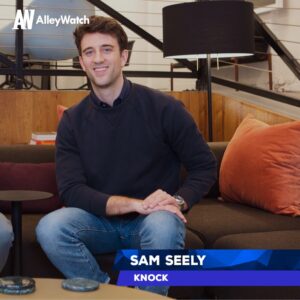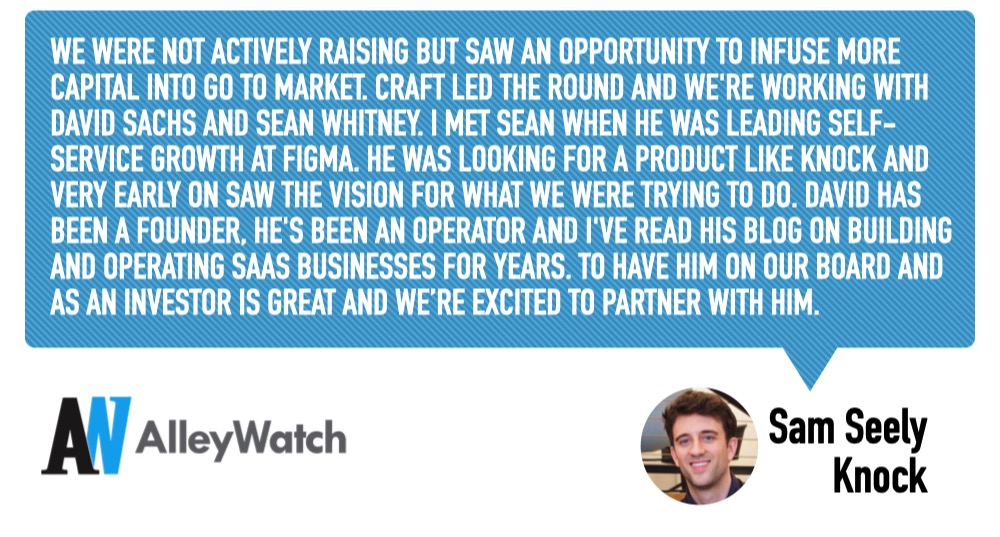Notifications have become an ever-increasingly important driver to ensure application engagement and retention; key concerns for all types of companies. When implemented properly, notifications can deliver timely and relevant information without adding additional pressure to resources and workflows. However, notifications have typically been viewed as an afterthought to the core product, often leading to a disparate system, which in the long term leads to technical debt. Knock is an API-based infrastructure platform that allows engineering and development teams to easily integrate notifications into their applications and create cohesive workflows. With the platform, teams across an organization including customer-facing product and support teams can deliver consistent notifications across all features and channels, built with scalability in mind. Knock also offers pre-built components, SDKs, and cross-channel integrations, making it versatile for engineering teams while saving them countless hours in custom development. Since launching two years ago, the company has secured 200+ customers across SaaS applications, Devtool platforms, and consumer products.
AlleyWatch caught up with Knock CEO and Cofounder Sam Seely to learn more about the business, the company’s strategic plans, latest round of funding, and much, much more…
Who were your investors and how much did you raise?
Knock raised a $12M Series A led by Craft Ventures, bringing the total funding to $18M. Our existing investors Afore Capital and Preface Capital also joined the round. David Sacks, Cofounder and Partner at Craft Ventures, will also join Knock’s Board.
Tell us about the product or service that Knock offers.
Knock is a notification infrastructure platform built specifically to help developers and product teams. We provide a set of APIs and components that teams can use to build great product experiences into their applications. In the same way that Stripe brought all of payments behind the set of APIs, we’re doing that for notifications.
What inspired the start of Knock?
 Knock was founded in 2021. My cofounder and CTO Chris Bell and I met on the product team at Frame.io, which was later acquired by Adobe. Chris was the first engineering leader and we did what every other team did back then when it came to product notifications: built it in-house and learned how painful of an experience that is. From the engineering side, you’re building all the integrations with downstream platforms, scaling that system, and taking bandwidth away from delivering your core product. On the product side, it felt like this is our key engagement driver for user engagement retention, but it all lives in the backend code. We couldn’t see any of the logic and there was not a real understanding of how consistent it was for our customers. We were looking at this problem and realized there are API as a service providers for search and for authentication, but no one had tackled this for notifications, particularly solving this pain point for developers. We decided to build it ourselves and it was really the inspiration for Knock.
Knock was founded in 2021. My cofounder and CTO Chris Bell and I met on the product team at Frame.io, which was later acquired by Adobe. Chris was the first engineering leader and we did what every other team did back then when it came to product notifications: built it in-house and learned how painful of an experience that is. From the engineering side, you’re building all the integrations with downstream platforms, scaling that system, and taking bandwidth away from delivering your core product. On the product side, it felt like this is our key engagement driver for user engagement retention, but it all lives in the backend code. We couldn’t see any of the logic and there was not a real understanding of how consistent it was for our customers. We were looking at this problem and realized there are API as a service providers for search and for authentication, but no one had tackled this for notifications, particularly solving this pain point for developers. We decided to build it ourselves and it was really the inspiration for Knock.
How is Knock different?
Most customer engagement platforms are sold to marketers but implemented by engineering teams. This leaves engineers to manage high-volume, production-risk systems in dashboards built for marketers; Knock is a customer engagement platform that works the way they do.
We’re an API first, and a dashboard second; this means we obsess over our SDKs and API docs. We provide developers with isolated testing environments, a git-like versioning workflow, and an API for testing and deploying our system in their CI/CD environment. Our customers get more flexibility, don’t have to manage preferences and in-app notifications in-house, and can manage our service as they would their own service: as part of their CI environment and deployment pipeline.
What market does Knock target and how big is it?
The consumer engagement market is $20 billion, but many of the products have been designed for and sold to marketers–not the developers. We see opportunities from B2B marketplaces to consumer marketplaces using Knock; The market is really any product that’s sending notifications today and we think we can help their developers and ultimately help them to deliver a better experience to their end users. We now have over 200 customers using Knock in production and am glad to share a couple of examples of Knock is helping them. Vercel was one of the first customers we brought onto the product and has been a big contributor to the vision of the product today. They use Knock for email and app messaging, to deliver billing and usage alerts to customers. With Knock the Vercel team enabled, not just the billing alerts that let you know when your usage is getting to a certain threshold, but they also use our preferences API to give customers really fine grain control over that experience. Maybe you don’t want to get alerted when you’ve hit your threshold, but when you’re half the way there; Knock allows that customization. Amplitude uses Knock to power in-app email and Slack notifications. Knock helps them provide more fine-grain preference control to users as well as make the workflow behind the scenes way more efficient with automation. Before Amplitude added Knock, they thought a rebuild of the infrastructure system would take a year or more if they had built it in-house, and with Knock they went live in four weeks. We were excited to be able to not just help them ship that faster, but then also manage it and automate the maintenance of that system moving forward.
What’s your business model?
Our business model is similar to what you’d see in other API-first businesses; our customers can get started using Knock for free. There’s no demo wall in front of the product. We want to make it as easy as possible for developers to just start playing around with the tools that we’ve built. And then as they get to a point where they’re sending higher volumes of messaging, we charge on a per-message basis.
How are you preparing for a potential economic slowdown?
We’ve always believed in the power of small, focused teams to move fast and build great products. That will continue to be our focus post-fundraise. We’ll continue to be strategic in how we build our team, and we’ll continue to focus on making the best product we possibly can for our customers.
What was the funding process like?
We were not actively raising but saw an opportunity to infuse more capital into go to market. Craft led the round and we’re working with David Sachs and Sean Whitney. I met Sean when he was leading self-service growth at Figma. He was looking for a product like Knock and very early on saw the vision for what we were trying to do. David has been a founder, he’s been an operator and I’ve read his blog on building and operating SaaS businesses for years. To have him on our board and as an investor is great and we’re excited to partner with him.

What are the biggest challenges that you faced while raising capital?
It’s more of an opportunity, but the question of timing is always something to be aware of as an entrepreneur. We were growing rapidly and serving larger customers, so I would say the challenge was making the decision that this was the right time to bring capital into the business.
What factors about your business led your investors to write the check?
For our investors, they are aligned with what we also believe, that there’s an inevitable shift happening in the way that products are built, whereas there is for any kind of unique value proposition that a company brings to market, there is a foundation of critical but generic services that support that value proposition.
We’ve seen this play out in other areas–how do customers pay you? How do they authenticate into your service? How do you notify them? Some great teams have come along and provided services around payments and authentication (Stripe, etc.) –we aim to do that for notifications.
What are the milestones you plan to achieve in the next six months?
We’ll be using the funding to serve our customers, with a core focus on product development, scaling up our service, and hiring talent as needed.
What advice can you offer companies in New York that do not have a fresh injection of capital in the bank?
Fundamentally, focusing on managing cash flows and maximizing efficiencies is essential, as is staying focused on your customers. What do they need most from the product you are building and how can you deliver it better than anyone else? Speak with your investors, they are there as sounding boards and many have deep expertise in running great businesses, and generally have great networks if you are looking to build partnerships or bring on talent that can help you get to the next level.
Where do you see the company going now over the near term?
What we’re seeing is that our flexible infrastructure means we’re actually getting pulled upmarket, into deals alongside your more traditional customer engagement programs and platforms like a Braze. It’s exciting to see this preview of where we might head.
What’s your favorite winter destination in and around the city?
There’s nothing better than Central Park on a snow day.





